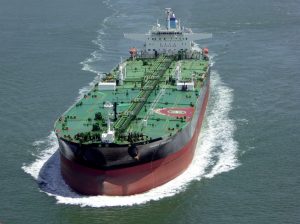
Sulphur content of crude feeds
US refiners have upgraded to take advantage of generally cheaper, sourer crude feeds. However, a ban on oil imports from Russia may make that harder to come by.

US refiners have upgraded to take advantage of generally cheaper, sourer crude feeds. However, a ban on oil imports from Russia may make that harder to come by.
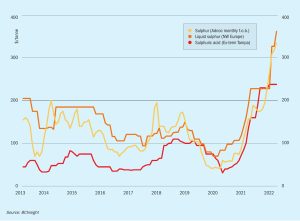
The ongoing conflict in Russia-Ukraine remains a key focus for the market in the months ahead. It is unclear whether buyers that are currently doing so will permanently choose non-Russian sulphur sources, but trade flow changes are expected to persist through the rest of 2022.
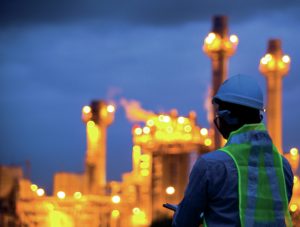
The Sulphur Community is set to reconvene in Abu Dhabi. CRU and UniverSUL Consulting, with the support of ADNOC, are hosting a new live event, Middle East Sulphur Conference (MEScon), which will take place at the Rosewood Abu Dhabi from 24-26 May 2022.
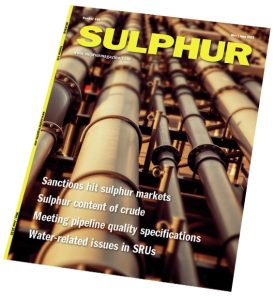
Sulphur prices keep on climbing. A quick check as I was writing this showed some indicators above $600/t, around four times what they were last year. As the title of this editorial suggests, what goes up must of course eventually come back down, but of course as always the question is: when?

Yara and Mosaic shocked markets with a settlement of $1,625/t c.fr for April, up $490/t on March, and the highest ever price recorded at Tampa, as the removal of Russian and Ukrainian ammonia supply impacted global prices, and Baltic rates soared to $1,500/t. However, April saw some of the global dislocations caused by the Russian conflict begin to ease, while the high prices saw buyers in the US delay purchases, leading to the Tampa price falling back $200/t for May loadings.

Gidara Energy has agreed with the Port of Rotterdam to develop a new waste to methanol facility in the Netherlands: Advanced Methanol Rotterdam (AMR). Gidara will duplicate its Advanced Methanol Amsterdam project as a template for AMR, using Gidara’s patented high temperature Winkler (HTW® ) technology, which converts nonrecyclable waste to renewable fuels. This technology has been used commercially in four other waste to syngas production facilities. AMR will convert around 180,000 t/a of non-recyclable waste into 90,000 t/a of methanol, while capturing all waste streams for use; CO2 will be captured and led to local greenhouses; bottom product residue will be used for cement production; and other streams like ammonia and salts will be sold and put to use as feed stock for other industries and road salt respectively, creating a fully circular concept. The facility is scheduled to start detail engineering and construction in the first half of 2023, when a permit is received, and start production of renewable methanol in 2025.

India’s new batch of urea plants are coming on-stream or nearing completion, but can the country regain the self-sufficiency in urea production that it enjoyed in the 1990s?

Spot ammonia prices made steep losses in west of Suez regions following the $200/t drop in the Tampa May contract price in late April, as supply and demand start to rebalance two months after the removal of Black Sea ammonia exports from the market. Yara has settled the Tampa contract price for May with Mosaic at $1,425/t c.fr, a $200/t drop from April.
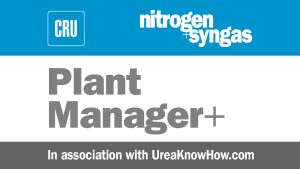
Leaks in the high-pressure synthesis section of a urea plant may lead to catastrophic consequences. In 2017, building on an incident database set up by UreaKnowHow.com, AmmoniaKnowHow.com and UreaKnowHow.com introduced FIORDA, the Fertilizer Industry Operational Risk Database, a global open source risk register for ammonia and urea plants.

Casale has acquired Hong Kong-based Green Granulation Ltd (GGL), and its proprietary technologies for the design and construction of urea and calcium ammonium nitrate (CAN) granulation systems. Casale says that the takeover is part of a broader strategy aimed at strengthening its leading position in the nitrogen market by leveraging the widest integrated portfolio of efficient technologies, enabling the company to offer a ‘one stop shop’ for the entire production cycle of nitrogen-based fertilizers, from raw materials to final products. GGL’s addition to the Casale group includes the Cold Recycle Granulation process, an advanced fluidised bed technology designed to accept a lower concentration of urea feed melt (ca 96% urea and biuret), as well as a proprietary design for both granulator and scrubber, a team of experts and qualified technicians, and considerable experience in several industrial references. The CRG design has a horizontal layout, leading to lower structural costs and higher efficiency, as well as lower total investment costs and power consumption, lower power consumption and simplified operation, and higher operational flexibility in urea and CAN granulation.